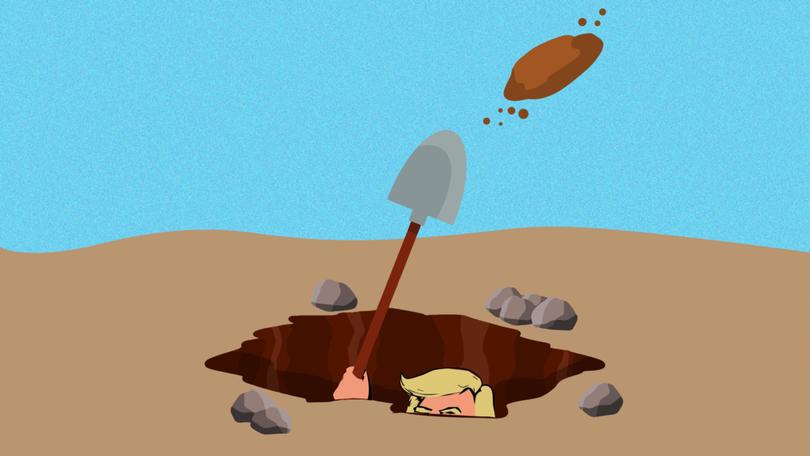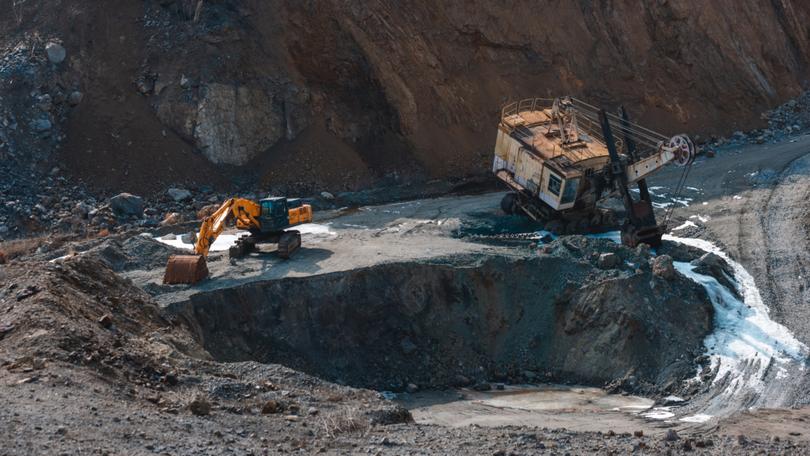THE ECONOMIST: Deep dig beneath Trump’s ambitious ‘Shock & Ore goal’ to revive US mining industry

Donald Trump wants minerals, and lots of them. America’s president is interested in Greenland for, among other things, its vast store of minerals and the largest deposits of rare earths outside China. In Ukraine he is eyeing the country’s apparently significant lithium resources. Noting Mr Trump’s interest, in February the Democratic Republic of Congo’s leaders offered America their mineral reserves.
Yet the hankering for foreign minerals is only part of it: Mr Trump’s bigger ambitions are at home, where he hopes to supercharge a declining industry that has gained strategic importance. Last month the president told Congress that he planned to take “historic action” to expand production of critical minerals and rare earths in America. On March 20 he set out the boldest measures the mining industry has seen in decades, with an executive order that aims to speed up permitting, prioritise land-use for mining and provide financial support.
The government seems to be motivated by America’s dependency on metal imports, at a time when supply chains are fraught with geopolitical risks. Mr Trump’s boosterism has made industry bosses tentatively hopeful. But there are doubts about whether his proposals are enough to draw investment into America’s mines and towards ore processing. They may not be enough to dig the industry out of its hole.
Sign up to The Nightly's newsletters.
Get the first look at the digital newspaper, curated daily stories and breaking headlines delivered to your inbox.
By continuing you agree to our Terms and Privacy Policy.From its pole position in the 1950s America has fallen far behind on mining and processing metals and minerals. The industry’s “risk-taking ability” has fallen, says one mining boss. Production of metal ore declined by about 3 per cent a year in 2019-24; that of critical minerals such as copper and nickel fell, too. For 12 of the 50 minerals America lists as “critical”, including gallium, graphite and manganese, it depends on other countries. In particular, China’s grip on the metals needed to make electricity grids and data centres is a worry in Washington.

A lot of investment will be required before digging can start. Mining is notoriously capital-intensive. According to McKinsey, a consultancy, to close the global supply gap for copper alone would require $US200b of capital expenditure over the next decade. Mr Trump’s list of metals and minerals, including everything from uranium to nickel and coal, will require yet more. What is more, mining timelines are decades long and often delayed. For projects valued at over $US1 billion ($1.5b), delays add, on average, over 50 per cent to initial timelines and 80 per cent to budgets, according to McKinsey.
America’s new, swaggeringly named National Energy Dominance Council hopes to streamline the process. A mining project can require 30 permits, including those to work on federal, private or tribal lands, or issued under the National Environmental Policy Act or through the Fish and Wildlife Service. Consultations include everyone from local governments to Native American tribes. The saga takes an average of nearly 30 years, the second-longest in the world, according to S&P Global, a financial-data firm. Even in the most mining-friendly jurisdictions, setting up a mine can take a decade.
Mr Trump’s executive order calls on institutions such as the Export-Import Bank and the US International Development Finance Corporation, whose focus is usually overseas, to fund mining projects at home and those abroad whose products can be processed in America. It also invokes the Defence Production Act, which allows the president to boost the supply of materials for domestic industry. But the president cannot “appropriate additional resources to agencies to carry out these activities”, according to the Centre for Strategic and International Studies, a think-tank. If Mr Trump wants to plough more money into minerals he will have to go through Congress — no simple task, given the Republicans’ slender majority and their focus on reducing the budget deficit.

Mining itself is only half the story. The raw material that is dug out of the ground is bound up in sulphides or oxides, and thus needs refinement (99 per cent-pure copper is barely good enough to be used as electric wire). Improving processing will be America’s most difficult task. A nickel smelter and refinery that can produce 50,000 tons of metal per year costs close to $US2b. Investing in such projects typically comes with returns which may be lower than the yield on a ten-year Treasury bond. Margins tend to be thin, especially compared with mining the ore. The price paid to smelters for raw copper concentrate is at its lowest in decades.
What is more, designing, building and operating smelters is hard. It is a dirty business that locals object to. Plants can take five years to get up and running, and years more to reach full capacity. The complex and energy-intensive processing requires skilled labour, which is thin on the ground.
Unlike their Chinese counterparts, Western companies have not found it easy to set up metal-refining facilities in the past 30 years, says Lyle Trytten, a metals-industry consultant. It took almost a decade to ramp up a facility run by Lynas, a rare-earth miner, in Malaysia that uses ore shipped from Mount Weld in Western Australia. Even the Chinese can struggle when building plants abroad. The Kwinana lithium plant in Australia, owned by Tianqi Lithium, a Chinese company, has taken years to get going and runs at a fraction of its capacity. The longer it takes, the more expensive it gets.
Boosting domestic production therefore looks daunting. One answer would be to deepen ties with experienced allies, such as Canada, where some American ore is already shipped for processing. The other would be to create a stable environment for miners in America, since they operate on long timescales. Unfortunately, Mr Trump’s style makes both things hard.
Originally published as Donald Trump digs deep to revive American mining
